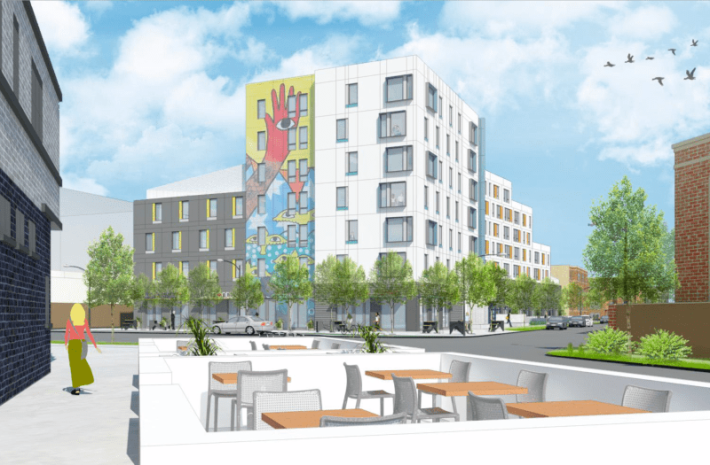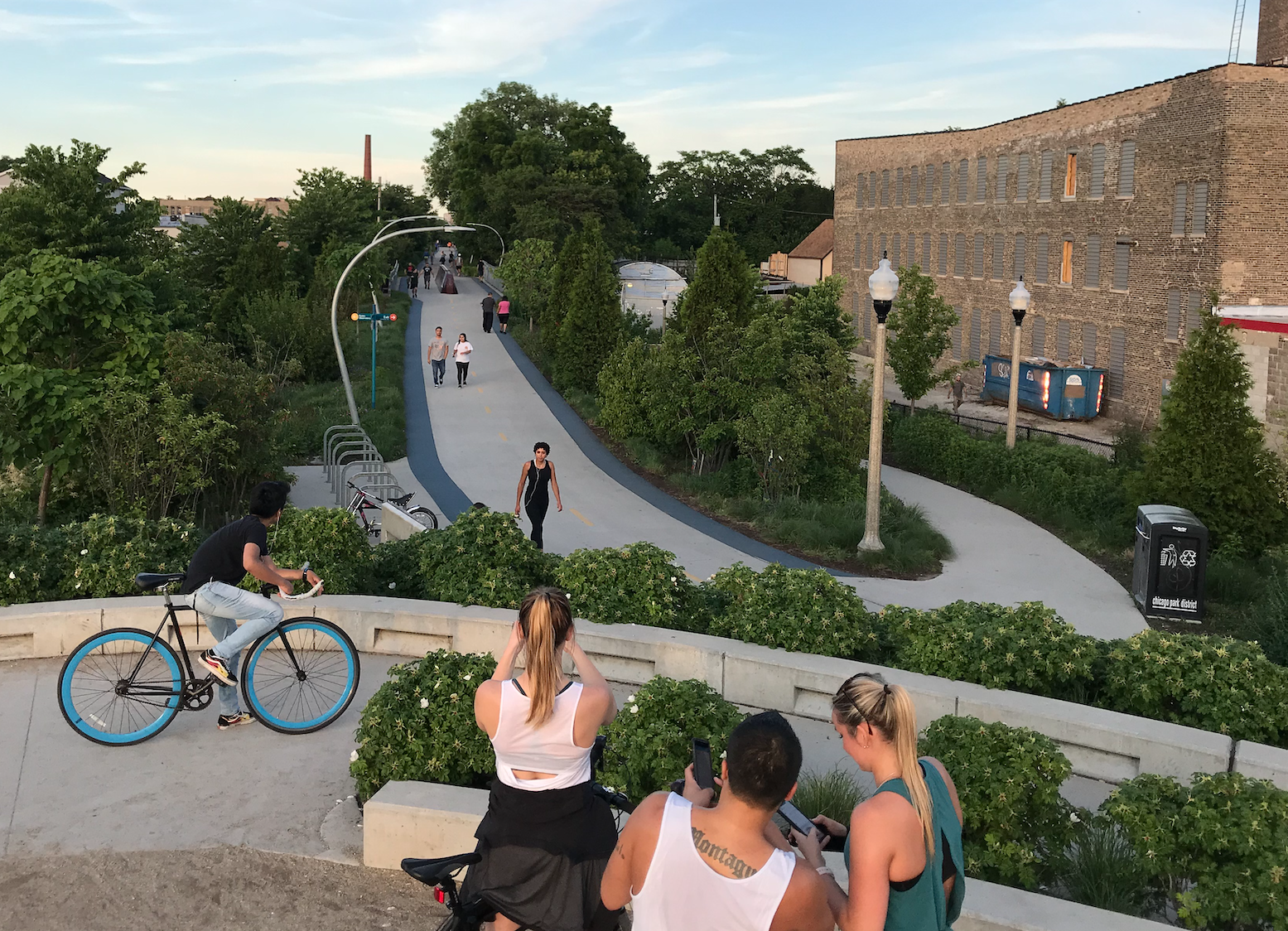Last week's City Council meeting was a momentous one for sustainable transportation issues. Not only was new Chicago Department of Transportation commissioner Gia Biagi officially approved, but aldermen also passed ordinances approving a six-month moratorium on development near the west end of The 606 elevated trail, plus city funding for a 100-percent affordable transit-oriented development by the Logan Square 'L' stop. Both of those initiatives are strategies to fight housing displacement in the gentrifying Near Northwest Side championed by 35th Ward alderman Carlos Ramirez-Rosa, who discussed the legislative wins after the hearing.
The 606 development freeze
Gentrification, rising property taxes and rents, and the displacement of longtime poor and working-class residents of color was already an issue in Logan Square and Humboldt Park before The 606, aka the Bloomingdale Trail, opened in June 2015. But there's no question that this transportation and recreation amenity has accelerated that process. For example, a study released last week by DePaul's Institute for Housing Studies found that home prices along the western half of the greenway have risen by nearly 344 percent since 2012.
An ordinance, introduced in May 2017 by three local Latino aldermen, including Ramirez-Rosa would have charge an additional fee of between $300,000 and $650,000 for teardowns, depending on how many units would be lost, as well as a fee for enlarging existing buildings. However, that legislation ultimately went nowhere at City Hall.

The recent legislation, introduced by Ramirez-Rosa and 26th Ward alderman Roberto Maldonado, called for a 14 month moratorium on demolition and construction permits, plus zoning changes, in the western trail corridor in order to provide time to study potential anti-displacement strategies. (Maldonado's involvement was not without irony, since he himself made $300,000 on 606-related real estate speculation.)
Mayor Lori Lightfoot initially blasted the proposal as too extreme, arguing, "We need to use a surgical knife, not a club." But she threw her support behind the ordinance after the duration of the freeze was cut to six months, and the affected area was reduced to the zone bounded by Armitage, Kostner, North, Kedzie, Hirsch, and California. The ordinance passed the Council last week without debate. It will take effect on February 1.
"I think that it's a great first step towards protecting the gentle density [two- and three- flats in danger of being replaced by upscale single-family homes] around The 606, which we just saw has been destroyed as a result of demolitions," Ramirez-Rosa said after the vote, citing the new DePaul study that had been released that morning. "It really shows that the city needs to take immediate steps to address the area around The 606 west of California, which at this time is seeing skyrocketing prices, to acquire land and to acquire property there [for affordable housing]. Now we have six months to really hunker down and work with the Department of Housing, work with the Law Department, work with local advocacy organizations to come up with longterm solutions to address the loss of affordability in the area."
Ramirez-Rosa added that he's satisfied with the freeze that passed, even though it's less than half the length that he and Maldonado originally proposed. "Initially we thought that it was going to take a year to really conduct a good study and come up with an optimal policy," he said. "But as a result of ongoing conversations with the housing department and others, we feel that we're actually going to be able to get there in six months. If at six months we're not where we need to be, then there's clarity amongst everyone that we will extend it for another six months."
City funding for the Logan affordable TOD
Another feather in Ramirez-Rosa's cap that day was the approval of bond financing for the all-affordable 100-unit TOD, with a projected construction cost of about $31 million, by the Logan Square Blue Line station. This ordinance is part of the authorization for the city to issue bonds, which will allows the development to receive low-income tax credits. The project faced stiff opposition from a vocal minority of nearby neighbors, but was ultimately approved by the vast majority of the hundreds of people who attended the final community input meeting last April.

Tax increment financing funding still needs to be approved by the Council to make make ends meet for the project. Other nuts-and-bolts approvals, such as an alley vacation will also need to be passed before construction can start, but the alderman said the project is on track to break ground this year.
"It's great to know that after years of diligent work on the part of my office and community groups that we are one step closer to breaking ground," Ramirez-Rosa said. "It's kind of interesting, you work on something for so many years and then it just passes, and it feels really good. It's an important thing that happened to day because for years it looked like we weren't going to get the necessary funding from the Rahm Emanuel administration. I'm glad that we have it now, but at the same time, this has to be just the beginning. This needs to be the first equitable TOD that we see the city of Chicago do that's all-affordable -- it can't be the last."




